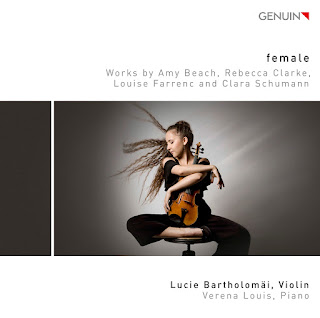I sometimes wonder what would have happened had Harry Partch and Julian Carrillo had ever met. Both created their own musical languages -- and instruments to play them.
Both subdivided the octave into microtones, much smaller subdivisions than traditional sharps and flats. Would they have inspired each other? I like to think so.
This release shows one of the things Mexican composer Julian Carrillo could have brought to the table -- a talent for composing with traditional scales. It features four of his early works before he began developing the "Sonido 13" (Thirteenth Sound), his work with microtones.
Superficially, Symphony No. 2 in C major seems to be a tonally-centered work, common in 1905 when it was written. But Carrillo offers up some surprises. Along with some catchy melodies, he creates a harmonic world all his own.
Chords resolve in surprising ways. While these aren't jarring changes, they seem to continually thwart the listener's expectations. And yet they always seem right.
The album is filled out with some shorter selections from Carrillo's early career. The most interesting are the excerpts from "Matilde o Mexico en 1810."
The opera was composed in 1910, celebrating Mexico's independence. Maestro Jose Miramontes Zapata had previously reconstructed and recorded the complete opera. His understanding of the work and only Carrillo's style bring these selections to life.
Carrillo's opera is both realistic and allegorical. Leitmotifs abound, and only someone with Zapata's understanding of what they signify and their importance in each section can give them proper balance.
These excerpts won me over. I'll be seeking out the complete opera. Carillo's writing is just as lyrical as his Italian colleagues -- like Puccini, whose "La fanciulla del West" premiered the same year. At the same time, though, it is distinctively not Italian. Carillo had his own voice, and his own style -- even before his work with the Sonido 13 began.
If microtones aren't your thing, give this disc a listen. There's a lot to enjoy. And if they are, then give this disc a listen. It will give you insight into the early days of an original thinker.
Julian Carrillo: Orchestral Music
Luis Guillermo Hernánandez Ávila, baritone; Coro y Orchestra Sinfonica de San Luis Potosi; Jose Miramontes Zapata, conductor
Toccata Classics










